BERN Registry
Evaluate long segment (> 120 mm) complex femoro-popliteal disease with Pulsar stent stratified for Critical Limb Ischaemia vs. Intermittent Claudication1
Conclusion
- Endovascular stenting of long femoro-popliteal lesions using the Pulsar-18 stent provides acceptable results, with patency and restenosis rates comparable to data from the literature for stenting of long femoro-popliteal obstructions.
Patient Demographics and Lesion Characteristics
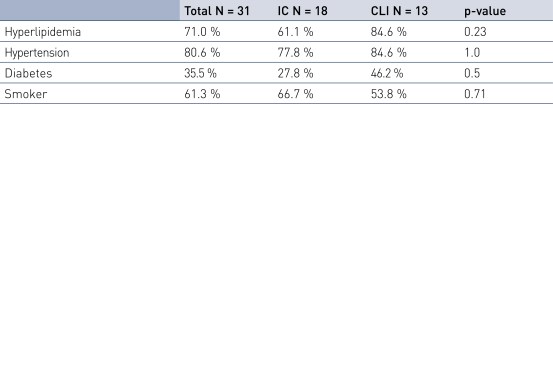
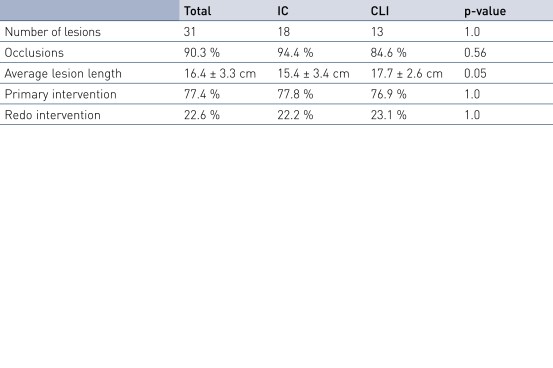
Study Design
- Single-center, retrospective registry
- Number of patients (n): 31
- Principal investigator: Dr. Nicolas Diehm, Inselspital, Bern
- Endpoints: Primary patency (PP), technical success, procedural complications, freedom from Target Lesion Revascularization (FTLR), Stratified for critical limb ischemia (CLI) vs. intermittent claudication (IC)
- Follow-up: 12-month
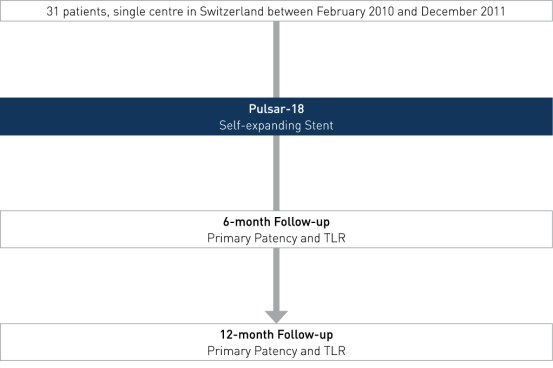
Results

BERN Registry in Perspective
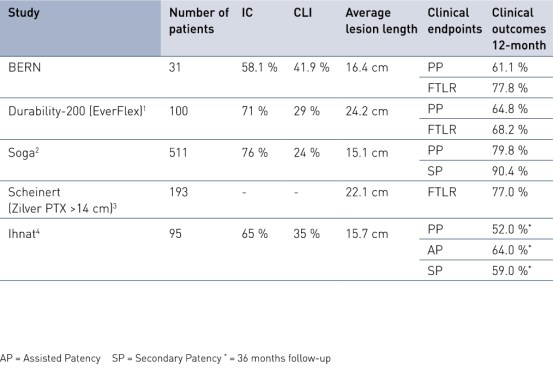
Downloads
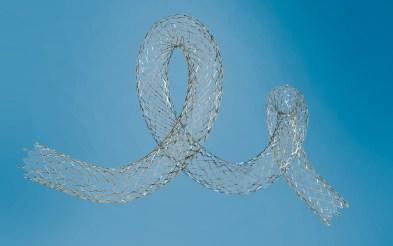
Vascular Intervention
Self-expanding StentOne-handed stent release for accurate stent deployment
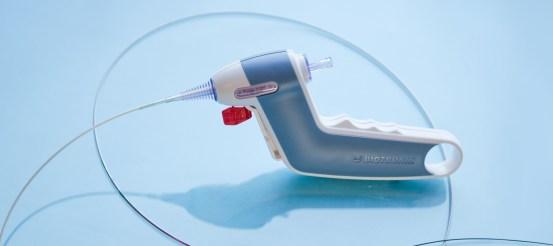
Vascular Intervention
Self-expanding StentTri-axial shaft for a stable delivery system during stent deployment
Sources:
1 Baumann F, D.–D. Do, Willenberg T, Baumgartner I, Diehm N. Treatment of long-segment femoro-popliteal obstructions: initial experience with a 4F compatible self-expanding nitinol stent and review of the literature. J Cardiovasc Surg. 2012; 53: 475-80.
2 Bosiers M, Deloose K, Callaert J, Moreels N, Keirse K, Verbist J, et al. Results of the Protege EverFlex 200-mm-long nitinol stent (ev3) in TASC C and D femoropopliteal lesions. J Vasc Surg. 2011; 54: 1042-50.
3 Soga Y, Iida O, Hirano K, Yokoi H, Nanto S, Nobuyoshi M. Mid-term clinical outcome and predictors of vessel patency after femoropopliteal stenting with self-expandable nitinol stent. J Vasc Surg. 2010; 52: 608-15.
4 Scheinert D. Interim Report on the Zilver® PTX™ (Drug-Eluting Stents in the SFA) Clinical Study, Subgroup Analysis-Long Lesions 7th edition of the Leipzig Interventional Course (LINC). Jan 25-28, 2012.
5 Ihnat DM, Duong ST, Taylor ZC, Leon LR, Mills JL, Sr., Goshima KR et al. Contemporary outcomes after superficial femoral ar¬tery angioplasty and stenting: the influence of TASC classification and runoff score. J Vasc Surg. 2008; 47: 967-74.
© BIOTRONIK AG
All rights reserved. Specifications are subject to modification, revision and improvement.
